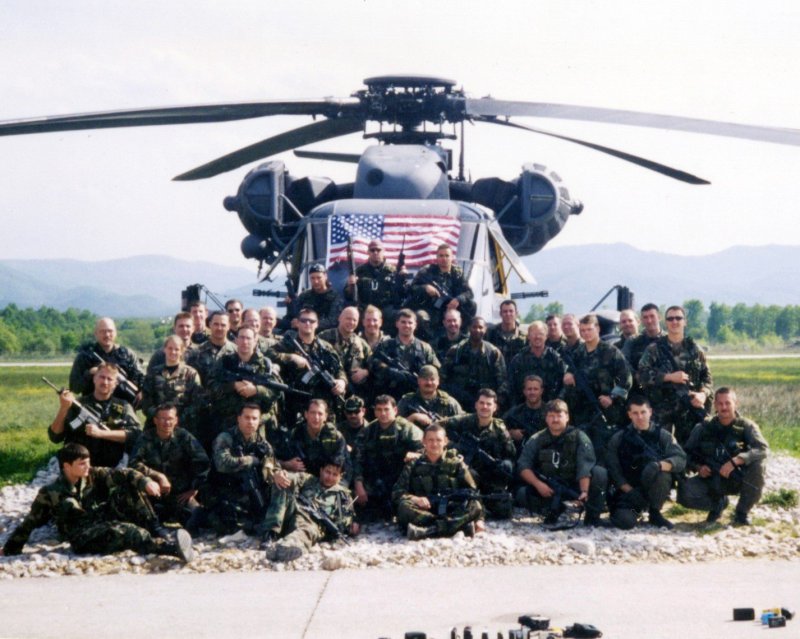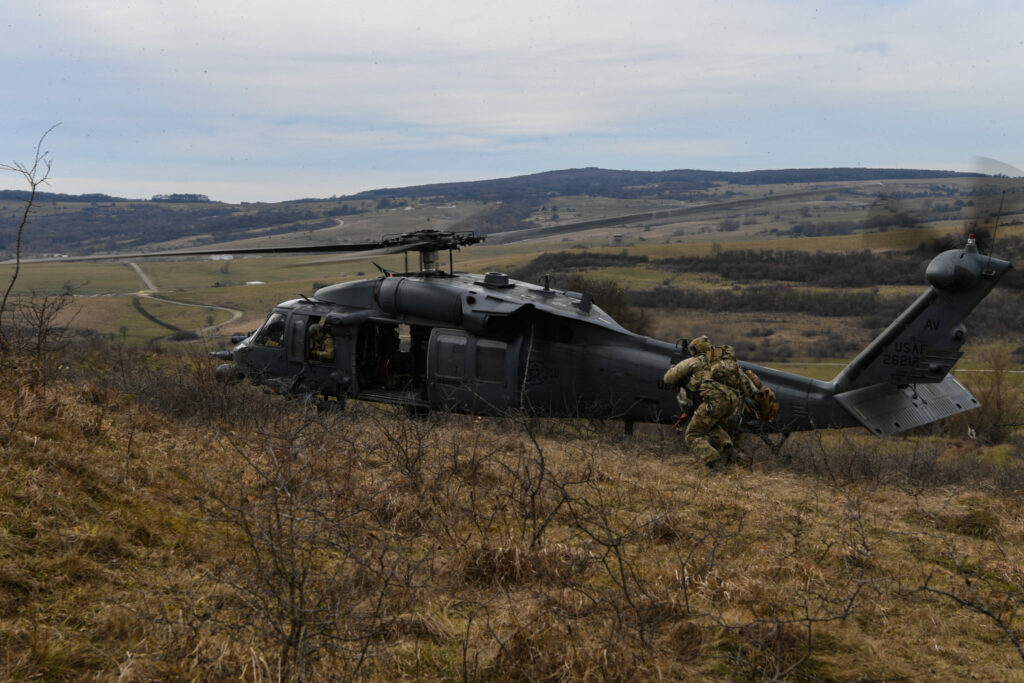Earlier in March, several Air Force squadrons flying a variety of aircraft, including fighter jets, helicopters, and remotely piloted aircraft, participated in a large combat search and rescue exercise in Romania.
Exercise Porcupine is an annual training event that tests and prepares the squadrons of the 31st Operations Group for combat operations. Not only does it test the capabilities and readiness of each individual squadron, but also their ability to work together as a team. This year, the exercise replicated the rescue of an F-16 Fighting Falcon pilot who had been shot down over enemy territory.
All in all, the 510th Fighter Squadron, 606th Air Control Squadron, and the 56th and 57th Rescue Squadrons took place in the exercise with F-16 jets, HH-60 Pave Hawk helicopters, and MQ-9 Reaper drones.

In the scenario, an F-16 fighter had been shot down by the enemy, but the pilot had managed to eject before the bird crashed and now was evading an enemy ground force that was coming after him. During that initial phase, a pilot’s Survival, Evasion, Resistance, and Resistance (SERE) training is crucial as he tries to not only evade enemy forces and brutal captivity but also survive in a potentially harsh environment. Potential injuries make the above that much more difficult. For the purposes of Operation Porcupine, the F-16 pilot had a broken arm and pain in his back.
Then, the pilot had to make contact with friendly forces and direct them to his location for a rescue mission. Once proper contact was made with the rescue squadrons, a pair of HH-60G Pave Hawks went in to rescue the downed pilot. The choppers landed as close to the pilot as possible to make the job of the Pararescuemen easier.
“Our role in the HH-60s was to provide a rescue asset to aid in the recovery of any isolated personnel,” U.S. Air Force 1st Lt. Richard Bush, a helicopter pilot with the 56th Rescue Squadron HH-60 pilot, said in a press release.
“Our ultimate goal was to rescue the pilot before he was captured by enemy forces. The importance of this exercise is to provide an opportunity for multiple [aircraft] to work together in a realistic and joint environment. There were definitely some things that arose that we had to work through on the fly, but overall I would call it a success and next year I imagine it will be the same.”

Training for a downed pilot scenario is not uncommon. The scenario is especially pertinent in Europe as it has happened during active operations.
In 1999, as the air campaign against the Serbs was taking place in Bosnia, Lieutenant Colonel David Goldfein—who later became a four-star general and the Chief of Staff of the Air Force—and his F-16 fighter jet was shot down by a Serbian surface-to-air missile. With Serbian troops on his heels, Goldfein escaped and evaded until Air Commandos managed to locate and rescue him.


